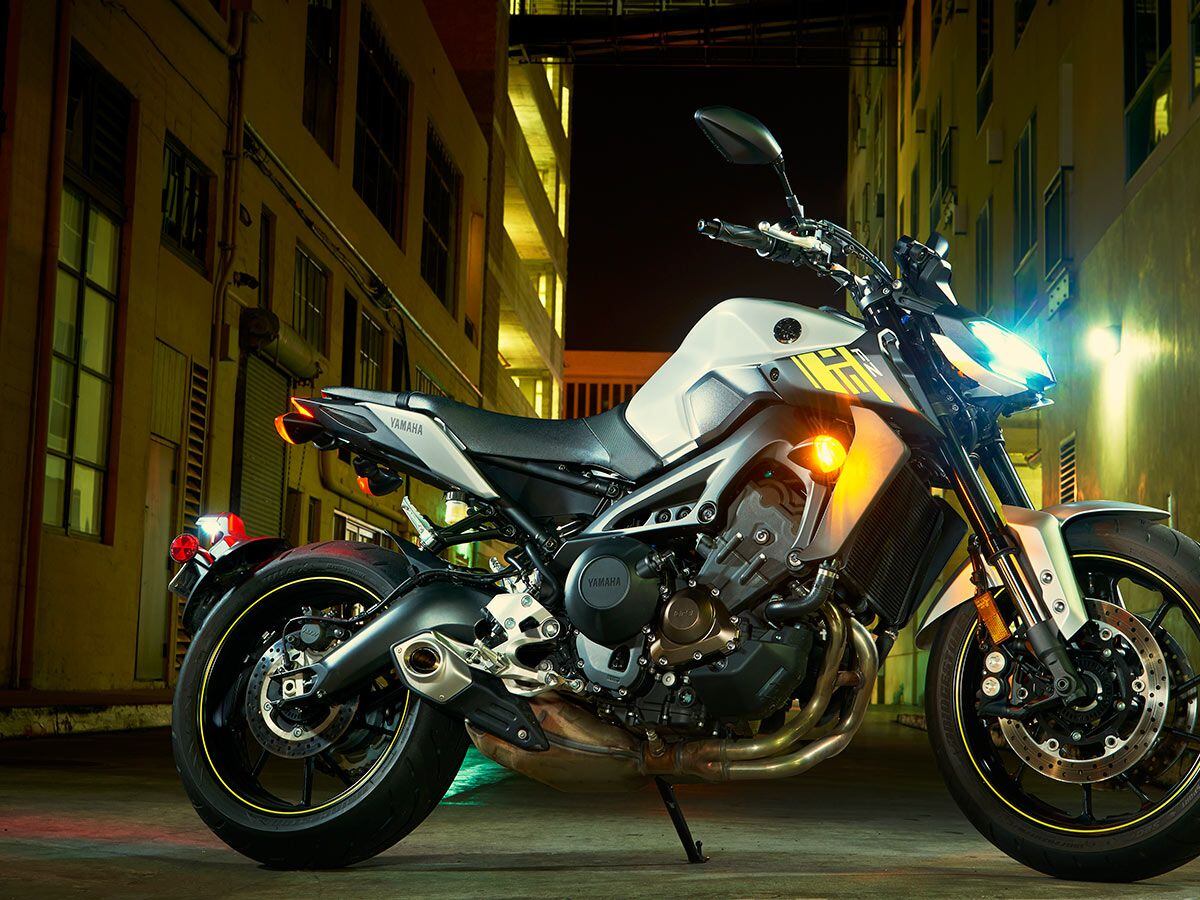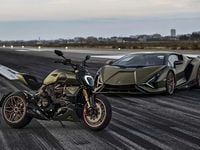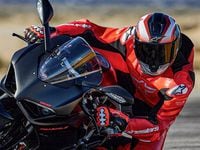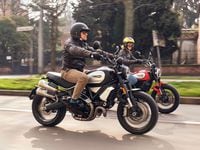W
hen Yamaha dropped the budget bomb shell known as the FZ-09 on the motorcycling landscape back in 2014, it started a revolution on several fronts. The FZ-09 was the first in a wave of naked bikes from the manufacturers that finally gained acceptance with the buying public in the USA. Of course, the fact that the Yamaha had superb performance for just $7,990 certainly didn’t hurt matters any. Many manufacturers looked to copy the FZ’s unbeatable combination of high performance and low price, but that goal was never met.But while the FZ-09 was setting new standards for bang for the buck, it wasn’t without its warts. Chief among those were flaccid fork spring and damping rates that allowed the front end to dive excessively on the brakes and wallow in the turns, as well as an abrupt throttle response that only exacerbated that handling issue. And although abundantly roomy, the Yamaha’s seat began to feel like an upholstered plank after about 30 minutes.So for 2017, Yamaha has given the FZ-09 a major makeover along with upgrades to the suspension, seat, and electronics. The price from three years ago, though, has risen a tad more than $1,000 along with those revisions to $8,999. So are the updates worth the added cost of admission?
In order to fix the fork issues, Yamaha stiffened up the compression damping a whopping 83 percent. As an added plus, adjustable compression damping has been added to the left fork leg, while rebound damping adjustability is handled by the right fork leg, with spring preload adjustable on both legs. To correct the original's light-switch throttle response, a new ECU contains revised EFI settings taken from the FJ-09 (which debuted in 2015) and XSR900 (introduced last year) for smoother throttle response. The same three-level D-Mode throttle mapping returns, with A being more aggressive than Standard and B mode offering the softest response.
That new ECU also has additional processing power to control the 2017 FZ's new standard ABS and traction control systems. The new Advics ABS setup (the same vendor that makes the four-piston Monoblock/radial-mount calipers) utilizes a Brembo front master cylinder for consistent feel while braking in low-grip situations. The TC system is basically identical to the TC on the newer FJ-09 and XSR900 models, with two levels of intervention, plus the system can be turned off if desired. And a new slipper/power-assist clutch smooths out downshifts while reducing lever effort.
As part of the styling redo, the FZ’s seat has been modified with a thicker foam (seat height rises 5mm) that provides a flatter profile compared to the original while retaining the narrow seat/tank junction. The passenger section of the seat has been extended by 13mm, even though the rear subframe has been shortened by 29mm to work with the smaller rear-end design.
That minimalist form means the license plate has been moved to a single-sided bracket attached to the swingarm; aftermarket accessory companies are surely smiling at that move. Meanwhile, the new front-end styling follows the FZ-10’s look, albeit with a quadruple LED headlight setup employing two inner low-beam lamps augmented by the outer two high-beam lamps.
The FZ-09’s superb engine and chassis combination is basically unchanged from the previous generation, which means the same quick-revving and torquey three-cylinder power returns with the agile handling that have made the Yamaha such a sales success. But now that the previous abrupt throttle response has been smoothed out, you can make much better use of that power in every riding situation, whether carving your favorite twisty road or making your way through city traffic. Standard riding mode still remains the best option though, as A mode’s initial power buildup in the first few degrees of throttle rotation is still too aggressive in the vast majority of street-riding situations.
The revamped suspension rates have transformed the FZ-09’s performance in the twisty bits, with the Yamaha having a much more composed feel when charging through corners. No more waiting for the chassis to settle down after making a steering or throttle input; the improved cornering habits result in a vastly increased fun factor while riding through your favorite canyon road. And yet the suspension is still compliant enough over nasty urban pavement that you don’t feel like you’ve been pounded into submission after a short ride. The new seat also helps in this regard, providing better support that didn’t have us standing on the pegs to avoid numb-butt after 30 minutes in the saddle.
Getting on the brakes no longer causes the fork to tie itself in knots, with far better control when applying the binders hard. And that’s with an additional 7 pounds in claimed curb weight compared to the old FZ. Speaking of brakes, the ABS setup thankfully has a fairly high threshold, permitting you to slow pretty aggressively before it begins to intervene.
We came away from our day spent with the 2017 Yamaha FZ-09 very impressed. In one fell swoop, Yamaha has fixed nearly all of the major issues that we had with the original model. Yes, the new styling might not be everyone’s cup of tea, but it looks much better in the flesh, and we were having so much fun riding it that any reservations on the styling faded into triviality by the end of the day. And even with the list price now at $8,999, the FZ-09 still represents one of the best bang-for-the-buck bargains in motorcycling.
















/cloudfront-us-east-1.images.arcpublishing.com/octane/XRI4GTLCVBA5NESASCBIR5LYQI.jpg)
/cloudfront-us-east-1.images.arcpublishing.com/octane/EF7566PXARGMBAOMLWTECYL3LE.jpg)





/cloudfront-us-east-1.images.arcpublishing.com/octane/3LASNXSWUZFFPISURDJF3OCWBU.jpg)
/cloudfront-us-east-1.images.arcpublishing.com/octane/2BHJKWUTBNBTLMQCKDNVEG6DKQ.jpg)
/cloudfront-us-east-1.images.arcpublishing.com/octane/MPHXIIV54NAU5L6E4SYZHCXVRM.jpg)



/cloudfront-us-east-1.images.arcpublishing.com/octane/WYXFHF4ZOBBTXELIZDB2FJXU64.jpg)
/cloudfront-us-east-1.images.arcpublishing.com/octane/K5FNV7ONUVDXJJ2H5BIWUGBGTI.jpg)
/cloudfront-us-east-1.images.arcpublishing.com/octane/MGVKP5VTNJHQ7FWNAHIWX4OHO4.jpg)
/cloudfront-us-east-1.images.arcpublishing.com/octane/6JEYTSIZQRHPJAVVPRLWZU63UM.jpg)
/cloudfront-us-east-1.images.arcpublishing.com/octane/XJU3VJZSDFEOVDBJTRXTTLTN5U.jpg)

/cloudfront-us-east-1.images.arcpublishing.com/octane/A6O3TEZF45BVFG2KKOUMPWEYM4.jpg)
/cloudfront-us-east-1.images.arcpublishing.com/octane/MHVFMH2YN5DT3EOZPLXKNFP3VM.jpg)
/cloudfront-us-east-1.images.arcpublishing.com/octane/VILA5L7CTBGOJGDKM2YAOCR6VU.jpg)
/cloudfront-us-east-1.images.arcpublishing.com/octane/GZMZRTYRS5A75G2EJDDGXLJEEE.jpg)